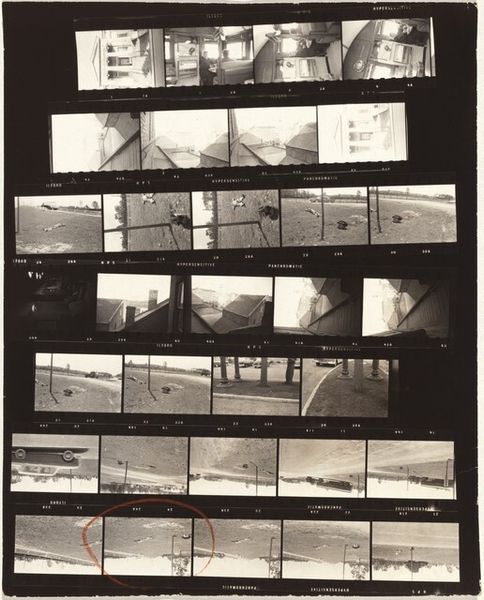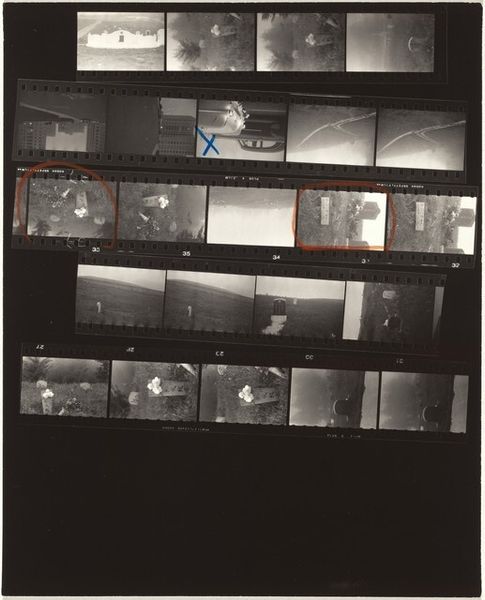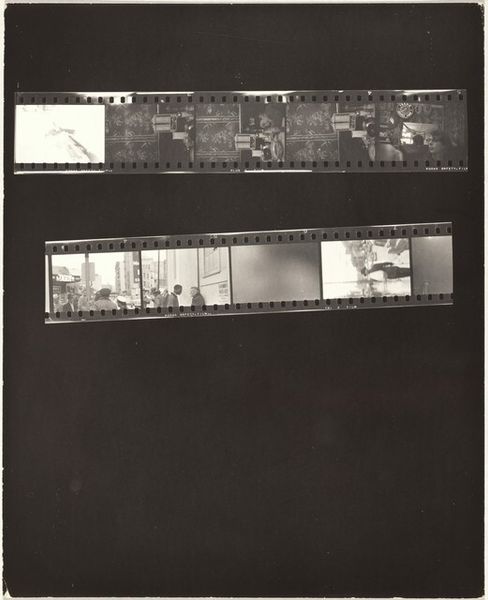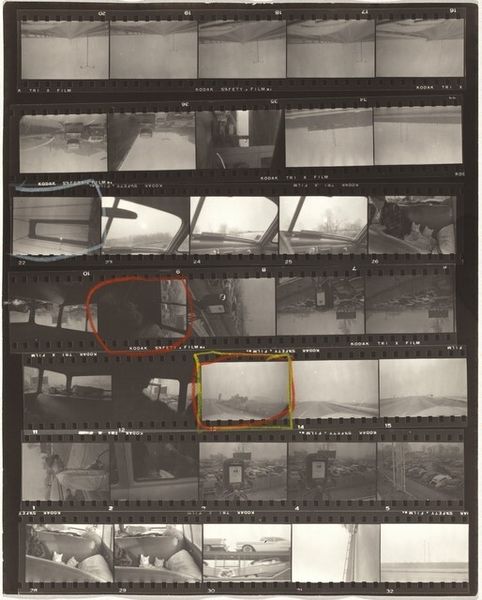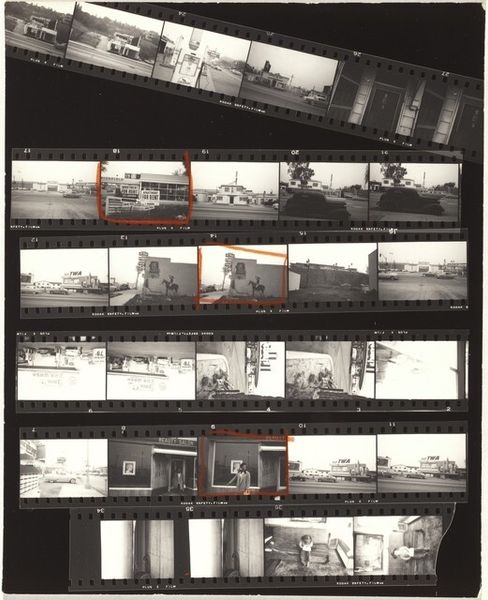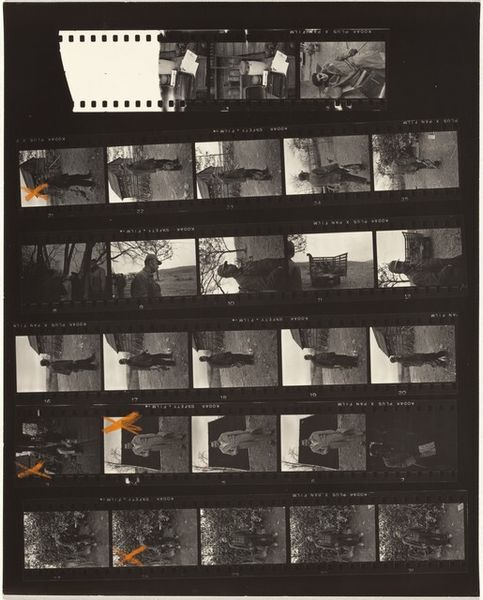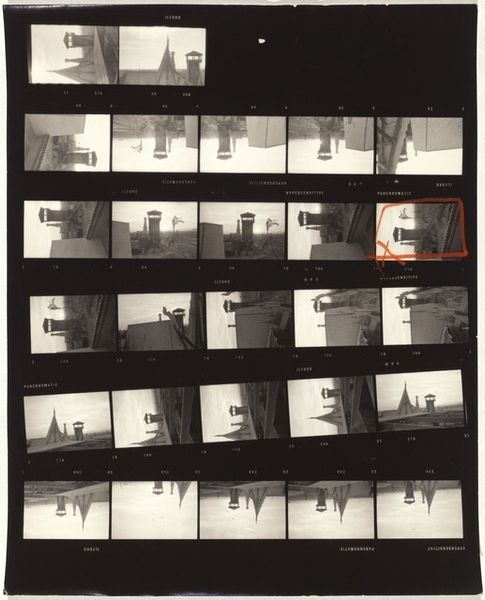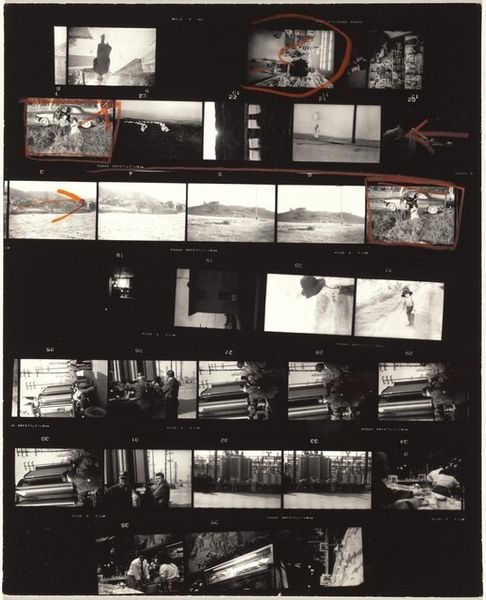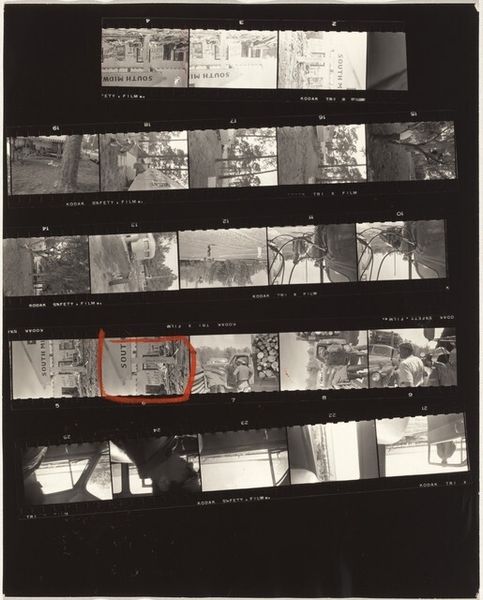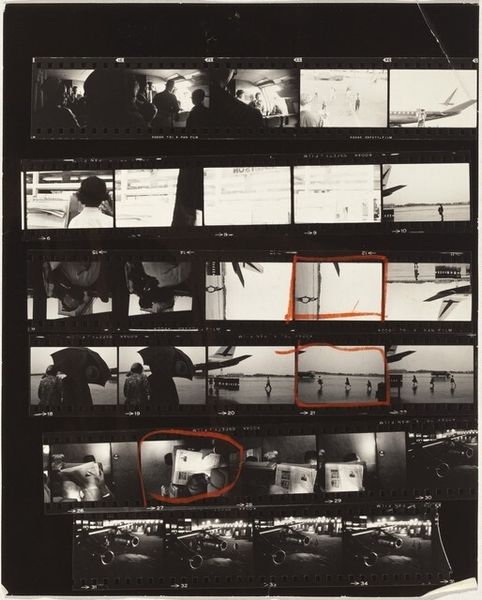
Dimensions: overall: 25.3 x 20.5 cm (9 15/16 x 8 1/16 in.)
Copyright: National Gallery of Art: CC0 1.0
Editor: So this is Robert Frank's "Guggenheim 401--Las Vegas, Nevada," from 1955. It’s a photograph presented as a contact sheet with some red markings on it. It feels… disjointed, like snippets of a story rather than a clear narrative. What strikes you most about its formal qualities? Curator: I am drawn to the stark contrast and its inherent discontinuity, you’re right. Consider how Frank presents the photographic object itself – the strips of film, the sprocket holes, the apparent markings. These are not meant to be concealed; they’re part of the composition. The red markings introduce an active line, bisecting and framing, emphasizing a specific reading. How do these elements contribute to the work's meaning? Editor: I suppose they prevent a singular interpretation. The red lines guide the eye but also feel disruptive, highlighting certain frames while excluding others. Curator: Precisely. It’s about selection and framing, both literally and figuratively. The high contrast enhances the geometric shapes within each frame and between frames, creating an overall grid-like structure. The subjects within each exposure lose representational clarity; instead, line, shape, tone are thrust forward. Do you see any underlying thematic structure emerging from these purely visual arrangements? Editor: Well, the framing seems to connect some of the images of what looks like suburban homes and barren land… so maybe there’s a statement on urban development, maybe something bleak? Curator: Perhaps. Think of the visual relationship between those elements, rather than relying on iconography alone. Is this juxtaposition visually pleasing, unsettling, or deliberately ambiguous? Editor: I think, unsettling, for sure. The visual information presented feels broken, intentionally fractured. Curator: Exactly. The tension between the fragmented images and the structuring red lines creates an effect of deliberate visual discord. This discord is not merely a byproduct of the process but an active principle in Frank's construction of the photograph. Editor: I see it differently now. It's less about "what" is being shown, but "how" it’s being presented. Curator: Indeed, it encourages us to engage critically with the medium of photography and the act of seeing itself.
Comments
No comments
Be the first to comment and join the conversation on the ultimate creative platform.

